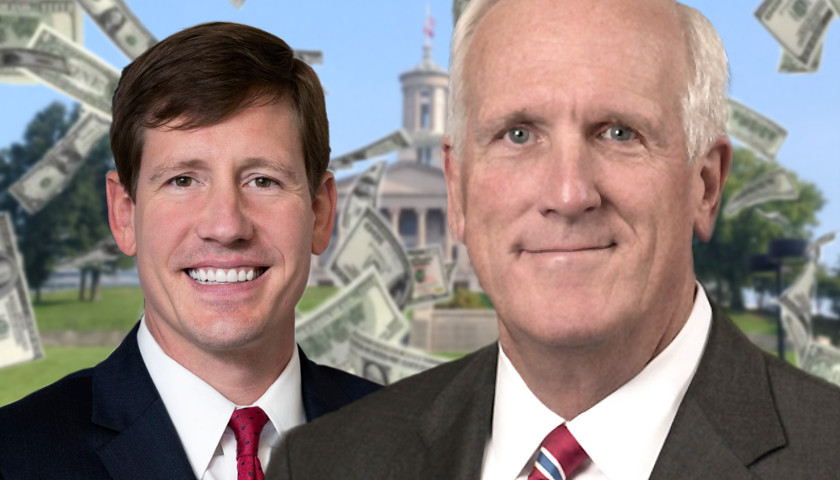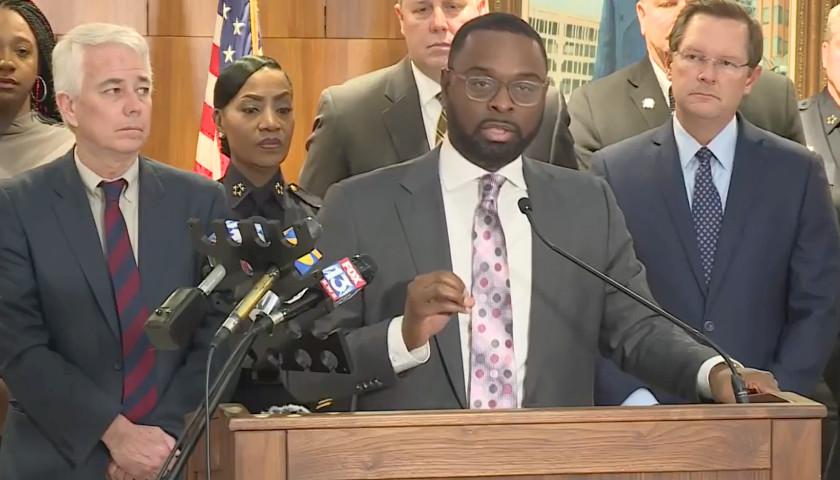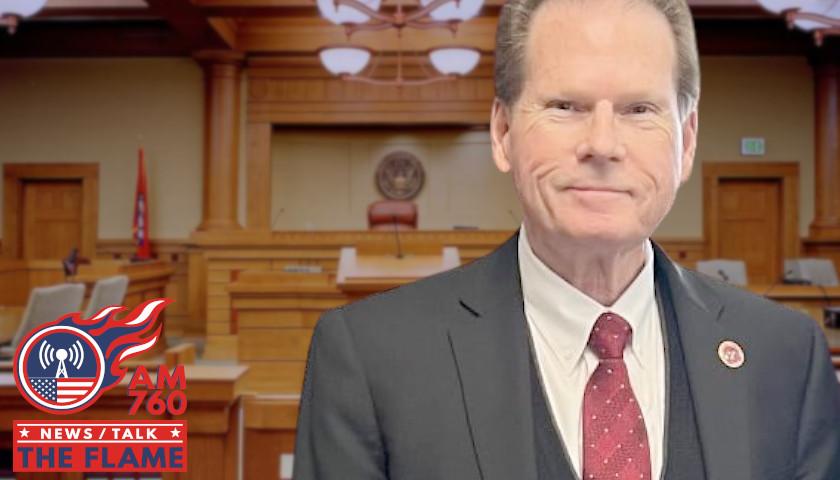Tennessee’s Attorney General Herbert Slatery issued an opinion in 2018 in response to a legislator’s inquiry indicating that allocations to the reserve for revenue fluctuation account, otherwise known as the Rainy Day Fund, do not count toward the Copeland Cap.
State Senator Brian Kelsey (R-Germantown) (pictured left) requested an opinion from the state’s Attorney General (pictured right) to two separate questions on the topic.
Specifically, Senator Kelsey’s two questions to the Attorney General were:
In determining whether “the rate of growth of appropriations from state tax revenues exceed[s] the estimated rate of growth of the state’s economy” under article II, section 24 of the Tennessee Constitution, are funds that are allocated to the “reserve for revenue fluctuation” included in “appropriations from state tax revenues”? (emphasis added)
And
In determining whether “the rate of growth of appropriations from state tax revenues exceed[s] the estimated rate of growth of the state’s economy” under article II, section 24 of the Tennessee Constitution, are funds previously allocated to the “reserve for revenue fluctuation” included in “appropriations from state tax revenues” in the year in which the funds are withdrawn? (emphasis added)
The Attorney General opined in 18-05 that the answer to both questions is “No,” before offering about four pages of analysis.
Senator Kelsey’s inquiry about Article II, Section 24 of the Tennessee Constitution is commonly referred to as the Copeland Cap. The Copeland Cap is an amendment to the Tennessee Constitution named for the former state legislator, Representative David Copeland (R-Ooltewah), who advocated for the measure.
The Copeland Cap puts a limit on the rate of growth of appropriations from state tax revenues so that the growth doesn’t exceed the estimated rate of growth of the state’s economy in any given year.
More of an accountability measure than a true limit, growth in appropriations can exceed the rate of growth in the economy through deliberate action by the Tennessee General Assembly. The deliberate action amounts to a simple majority vote by both chambers of the state legislature, which ensures their awareness of the rate of growth of state appropriations in relation to growth of the economy.
Growth of the economy, which is based upon the percentage increase in personal income of Tennesseans, is estimated in a report by the State Funding Board and included in the governor’s annual budget document.
In 1978, Tennesseans voted to include the provision in the Tennessee Constitution, which resulted in the following additional language under Article II, Section 24:
In no year shall the rate of growth of appropriations from state tax revenues exceed the estimated rate of growth of the state’s economy as determined by law. Current state law bases growth in the economy on the project change in Tennessee personal income which consists of the sources of income as defined by the U.S. Department of Commerce.
No appropriation in excess of this limitation shall be made unless the General Assembly shall, by law containing no other subject matter, set forth the dollar amount and the rate by which the limit will be exceeded.
From a practical standpoint, the administration compares state appropriations from the previous year to the upcoming fiscal year, calculating the percentage increase and does likewise with economic growth.
If the appropriation increase is greater than the economic growth increase, the excess must be authorized by the state legislature in a standalone bill, separate from that with authorizes the budget for the upcoming fiscal year.
The Senator’s inquiry involves the interplay between the Copeland Cap and reserve for revenue fluctuations, more commonly known as the Rainy Day Fund.
Beginning with the budget for the 1998-1999 fiscal year, state statute requires that the Rainy Day Fund shall be available “to meet unexpected shortfalls of revenue or to meet expenditure requirements in excess of budgeted appropriation levels.”
Relative to the annual allocations to the general fund and the education trust fund, state law requires that the governor include in the budget an allocation to the Rainy Day Fund equal to the lesser of maintaining eight percent in the fund or ten percent of the estimated growth in state revenues.
The Attorney General’s analysis goes on to point out that “clearly” the Tennessee General Assembly called for amounts to be “allocated” to the Rainy Day Fund as opposed to being “appropriated,” which are not synonymous.
An “allocation,” according to the opinion which references Black’s Law Dictionary, is “[t]he amount or share of something that has been set aside or designated for a particular purpose.”
Whereas, an “appropriation” is “an authority from the legislature, given at the proper time and in legal form, to the proper officers, to apply sums of money, out of that which may be in the treasury in a given year, to specified objects or demands against the state.”
As a backup source for funding appropriations made by the General Assembly for statutory purposes, use of the Rainy Day Fund does not increase total appropriations.
“Accordingly,” the Attorney General advises, “state tax revenue allocated to the Rainy Day Fund in the budget document should not be included in ‘appropriations from state tax revenues’ when determining whether the Copeland Cap has been exceeded.”
When considering whether funds withdrawn from the Rainy Day Fund in any given year are included in the Copeland Cap calculation, the Attorney General makes an important initial observation that the Copeland Cap considers only “appropriations from state tax revenues.”
The opinion on withdrawals from the Rainy Day Fund first makes the distinction that the state receives revenues that come from sources other than state taxes, such as license fees and federal funds.
The Attorney General then relies heavily on “well-established constitutional construction principles” and Black’s Law Dictionary when considering the use of the term “revenues” versus “reserves” as used in the two paragraphs of the Copeland Cap amendment.
The Attorney General concludes that in calculating the rate of growth, only appropriations of state tax revenues received in that fiscal year, and not appropriations from the Rainy Day Fund, are to be included in the Copeland Cap calculation.
Governor Lee’s first budget, which covers fiscal year 2019-2020, calls for the single largest deposit to the Rainy Day Fund at $225 million.
The estimated $875 million in the Rainy Day Fund as of June 30, 2019, plus the deposit for the 2019-2020 fiscal year will put the total in the Rainy Day Fund at the end of the fiscal year at a record-setting $1.1 billion, according to the budget document.
The 2019-2020 budget’s comparison of Tennessee personal income and appropriations from state tax revenues shows the former with a growth of 4.26 percent and the latter with a growth of 2.55 percent, thereby staying within the Copeland Cap.
—
Laura Baigert is a senior reporter at The Tennessee Star.








